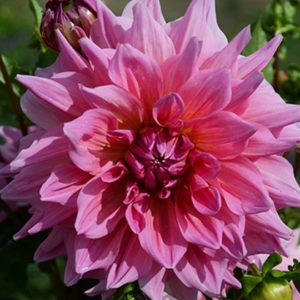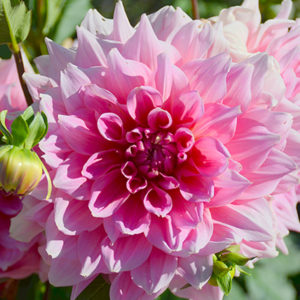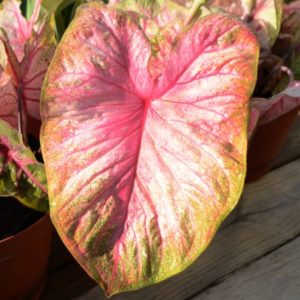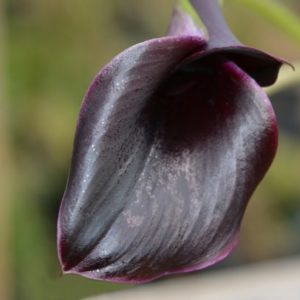Description
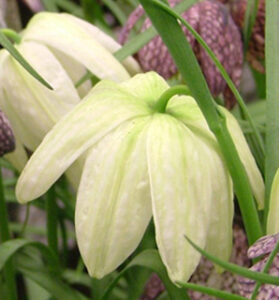 Fritillaria,
Fritillaria,
Meleagris Alba
Of all the spring bulbs, Fritillarias are the least seen in American gardens and yet, with their preference for being grown in pots, they should be one of the most popular spring and early summer bulbs. Anna Pavord in her seminal book on bulbs, aptly titled, Bulb, describes this family of plants in the following way:
“Even in the wild, few fritillaries make massive spreads…Mostly they are solitary creatures which makes them perfect for jewel-box gardening (British for pot gardening). Plant a single bulb in a terra-cotta pot (It is perfectly OK to use a plastic pot providing it has excellent drainage.) and as each comes into flower bring it to a place – the front door perhaps – where you will see it often. Stand different pots together on a plant stand outside a window, where you can admire the perfection of each individual bloom. Because their colors are so muted, fritillaries can get lost in the hurly-burly of a garden. Displayed like the crown jewels, each flower in its own pot, their sophistication is more apparent.”
Most fritillaries are native to the high mountainous regions of Central Asia. They grow in the scree of collapsed mountainsides amid lots of rocks and little soil. They are accustomed to experiencing wet springs and very dry summers and winters. The name comes from the Latin, fritillus, which means “dice box” and refers to the checkered pattern on the petals of Fritillaria meleagris and the boxy shaped of its individual blossoms.
Fritillarias can be grown in well drained, organically-rich soil and full to partial sun. They are deer and rodent resistant. The bulbs are quite perishable so handle with care and PLANT IMMEDIATELY UPON RECEIPT.
All Fritillaria bulbs have a concave indentation in the top of the bulb. Because of this indentation, Fritillaria bulbs can trap and hold water, so it is best to plant fritillaria bulbs on their side so that the water can drain off the bulb.
The bulb, plant and blossoms are deer and critter resistant. Because of their size, it is recommended to plant 10 bulbs in a group.
Fritillaria Meleagris Alba are among the smallest of all Fritillaria, but they produce an amazing presence in any garden. They are native to Europe (southern England to the northern Balkans and western Russia) and naturalized in Scandinavia. Sometime during the 1600’s, the plant made its way to the United States. Thomas Jefferson was evidently fascinated with the plant, but had a difficult time getting it started. His diarie indicated that he placed 5 orders for bulbs before he was successful. The roots he finally received thrived so well that he divided them and placed them throughout the property.
Fritillaria meleagris Alba is a naturally occurring and frequently occurring sport of Fritillaria meleagris. It is an excellent pollinator plant, beloved by bees, and deer and critter resistant.
These plants can reach a height of 6-8 inches and are hardy from Hardiness Zones 3-8. They are good forcers and excellent pollinator plants. For a presence in the garden, at least 10 bulbs should be planted together.
Fritillarias will prosper for years in moist, but well drained, organically-rich soil and full to partial sun. They are deer and rodent resistant. The bulbs are quite perishable so handle with care and PLANT IMMEDIATELY UPON RECEIPT. Because of their tiny size, it is recommended to plant at least 10 bulbs in a group.
Planting Bulbs in the Fall for Glorious Spring Color
Bulbs are some of the easiest plants to grow. Fundamentally the process requires four steps.
1. Dig a hole.
2. Dust the hole with bone meal.
3. Place the bulb in the hole.
4. Fill the hole with soil.
There are, however, some additional refinements which help produce even more lavish results and enhance protection from critters.
First, bulbs can and should be planted deeper than the instructions you receive on the package labels. An easy way to remember how deep to plant the bulb is to think of a quarter. If the bulb you are planting has the same diameter as a quarter or less, plant the bulb 4 inches deep. If the bulb is broader than a quarter, plant it 6-10 inches deep. Large bulbs like some alliums, camassias, standard tulips and fritillaries can easily be planted 10 inches deep. As the soil compacts days, weeks and months after planting, it produces a thinner layer of soil on top of the bulb. Planting bulbs deep helps with critter control. Moles, voles, chipmunks and squirrels are lazy little creatures, and they don’t like doing a lot of digging to reach their food.
Second, bone meal is a must. It is an excellent source of calcium and phosphorus which help the bulbs to form a strong root system and healthy stems. For large bulbs (those bigger than a quarter), use ¼ cup per bulb. For small bulbs, dust the entire surface or hole where the bulbs will reside.
Third, small bulbs should be planted in clusters of 10 or more – 1 inch apart. Large bulbs, like allium, can stand along, but create a much more pleasing presence in the garden when planted is clusters of 3-5. They should be separated by no more than 4-6 inches.
Fourth, bulbs usually multiply fairly quickly and once crowded will not produce blossoms. Plan to divide your bulbs in mid-summer to fall when the top growth has dried out.
These simple, easy, quick tasks are all that is required to produce a lovely bulb display year after year.
Planting Bulbs in Containers
If you live in Hardiness Zones 5 and higher all you need to do is mix some soil. Check out the soil mix described in detail in our Harvesting History YouTube video. Do not use prepared soil mixes.
The Best Soil Mix for Containers
Always plant bulbs more densely in containers than in the ground. Pots as small as 6-inches in diameter can have a showy presence on a deck, porch or patio. You can use much larger pots and plant several kinds of bulbs.
Fill the pot half full, dust the soil surface with bone meal, arrange the bulbs on top of the bone meal and fill the pot with the rest of the soil. Dust the surface of the soil with more bone meal. Water thoroughly, but do not let the pot stand in a saucer of water.
If you live in Hardiness Zones 1-4, you must protect the pots by bringing them into an unheated garage or surrounding them with bales of straw. If you do not do this, the bulbs usually freeze and turn to mush.


